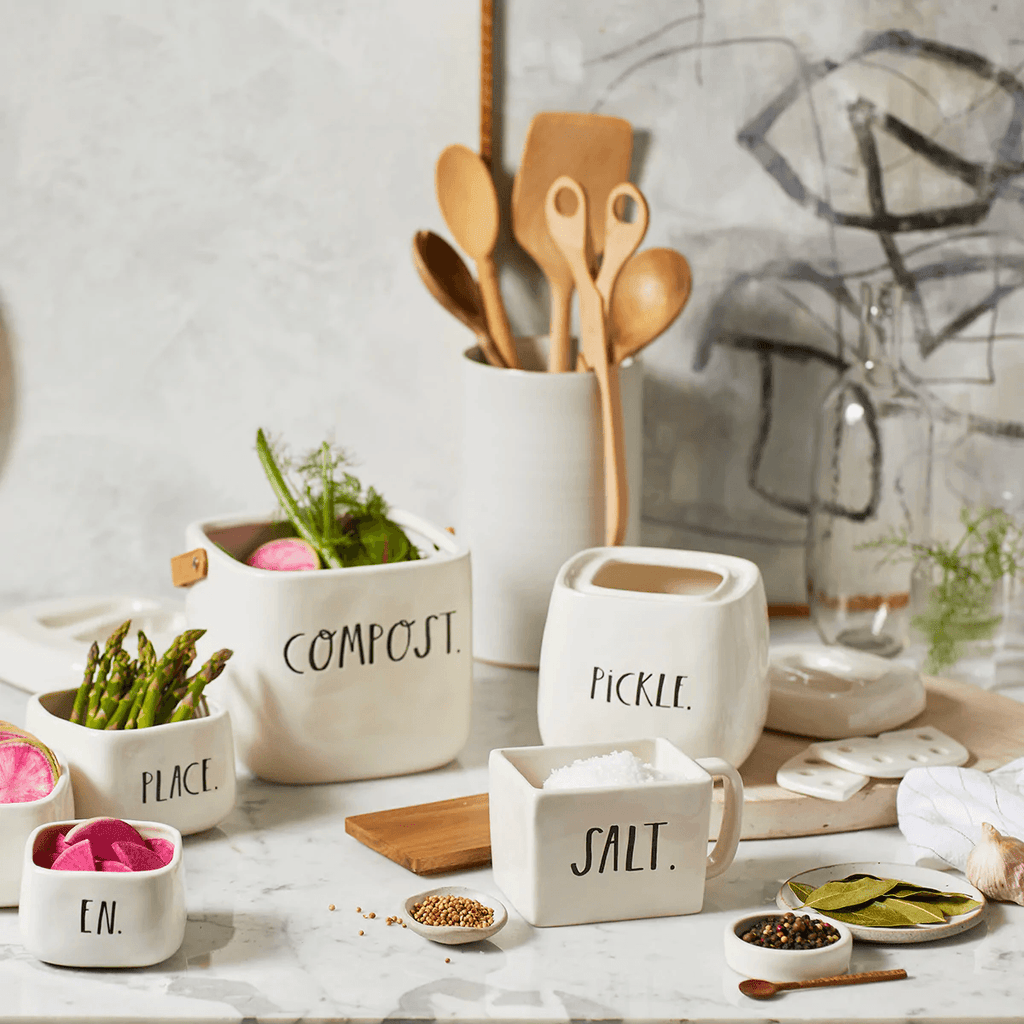Composting is one of the best things you can do for your plants, but it’s essential to know how to use compost in garden improvements and care to get the most benefits out of your efforts.
Read up on the basics, then shop the latest Rae Dunn planters from the new Stem Print collection and make some pretty updates to your plant display!
Benefits of Adding Compost to Garden
In recent years, composting has surged in popularity, but this plant-friendly, planet-friendly gardening practice is definitely nothing new. In fact, humans have been composting for almost as long as they’ve been gardening, and we’ve learned plenty of things along the way about how using compost benefits our plants.
These benefits include:
- More nutrient-rich soil for plants to thrive in
- Decreased use of chemical fertilizers
- Reduced amount of waste ending up in landfills, where it releases methane into the air
- Reduced carbon footprint
That’s a lot of benefits for such a simple process, and more than enough incentive to start composting for your garden. (Psst: Don’t have a garden but still interested in composting? See if your community offers a composting pick-up service, or check out an app like ShareWaste to find out if there are any nearby takers.)
How to Make Compost at Home: Step-by-Step

For composting made easy, the best place to start is usually right in your kitchen. Here’s how to get the ball rolling.
Step 1: Collect Your Kitchen Scraps
Place a ceramic kitchen compost bin on your countertop or under the sink and toss in any and all compostable food scraps as you go about your day. Eggshells, coffee grounds, and most fruit and veggie scraps can all go in the bin, as can things like used paper towels, so long as they don’t have any chemical cleaning products or meat residue on them. These will be the “green” materials for your bin.
Step 2: Fill Up Your Outdoor Compost Pile or Bin
Your outdoor compost pile or bin is where you’ll combine the contents of your kitchen compost container with things like dried leaves, cardboard, wood shavings, and shredded tree branches (the “brown” materials). You can also add in grass clippings and most yard waste.
Step 3: Water and Turn Your Compost
You must water your compost regularly to ensure it stays nice and damp. Just be wary of overwatering it, since you want it moist but not sopping wet. You'll also need to turn your compost once a week, either manually (if it’s in a pile) or using the handle on the side of your bin.
Step 4: Harvest
Your compost is ready to be used in your garden when it is a rich brown color and crumbly to the touch. How long this takes depends on the amount of material in your pile or bin and outside conditions. When it's ready, you can either sprinkle it directly over your plants or steep it in water to create a homemade liquid fertilizer.

Quick Tips for Using Compost
Follow these additional tips when composting to simplify the process and make a more nutritious fertilizer:
- Use a compost bin to collect scraps, not a regular bucket. Ceramic kitchen compost bins are designed to keep odors and bugs out.
- Combine two-thirds brown material with one-third green. This balance is vital for ensuring you have just enough nitrogen in the mixture and that your compost comes together efficiently.
- Add worms. If you have an in-the-ground compost pile or an open-bottomed compost bin, you can either take steps to attract earthworms to your compost or add red wigglers yourself. They'll help break down the organic matter, and their tunneling will improve air and water circulation.
- Be wary of non-compostables. Be careful not to add anything that won't break down, such as the stickers on fruits and vegetables, highly acidic items like citrus peels and onions, and any glossy paper. Research the complete list of non-compostable things to know what to avoid.
Happier plants mean a happier home. Start composting today to help your garden thrive, and show off your hard work with some ceramic herb pots for the kitchen windowsill or a stylish ceramic planter.
To shop the full collection, or explore our other Rae Dunn collections, visit the Magenta website today.


Leave a comment